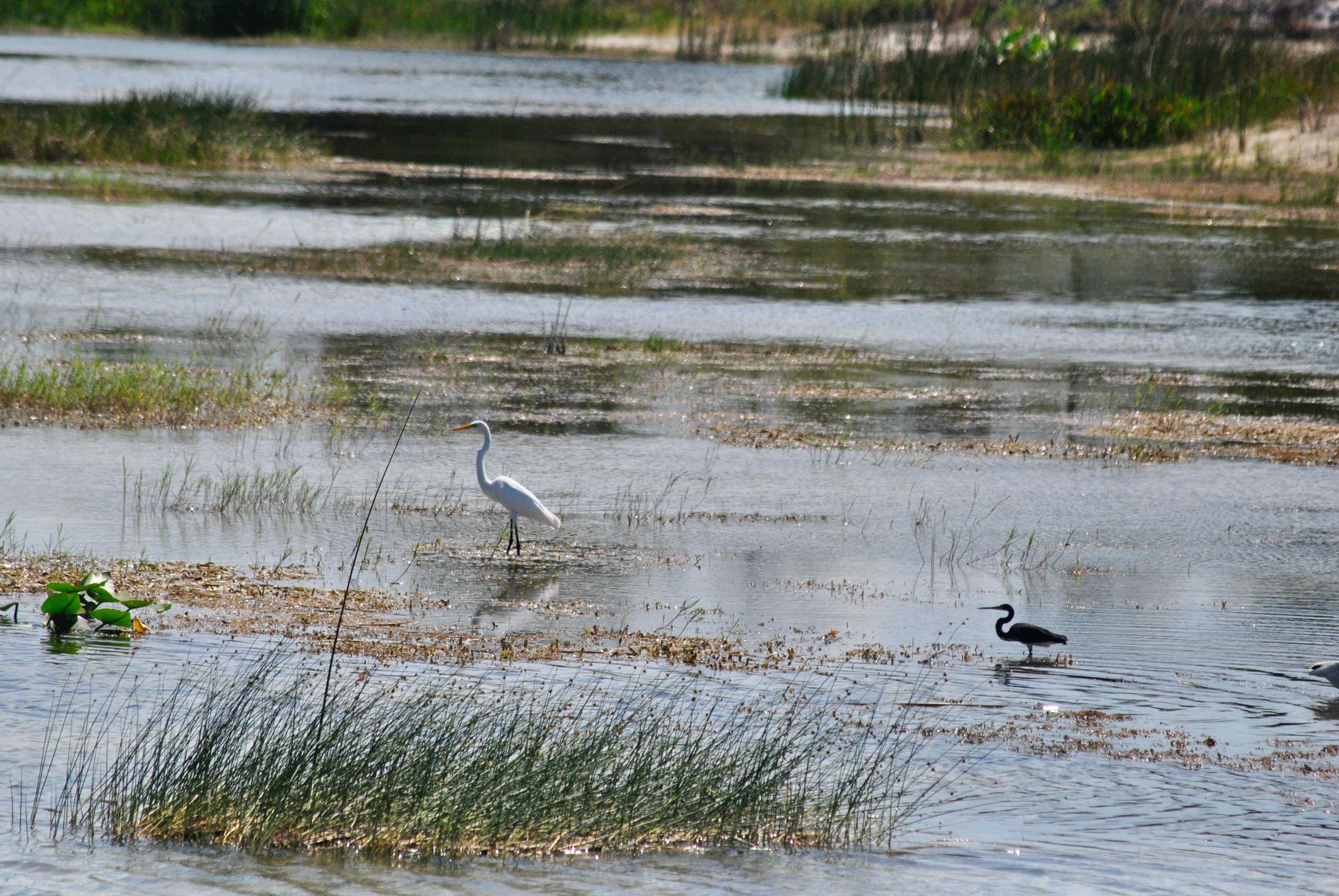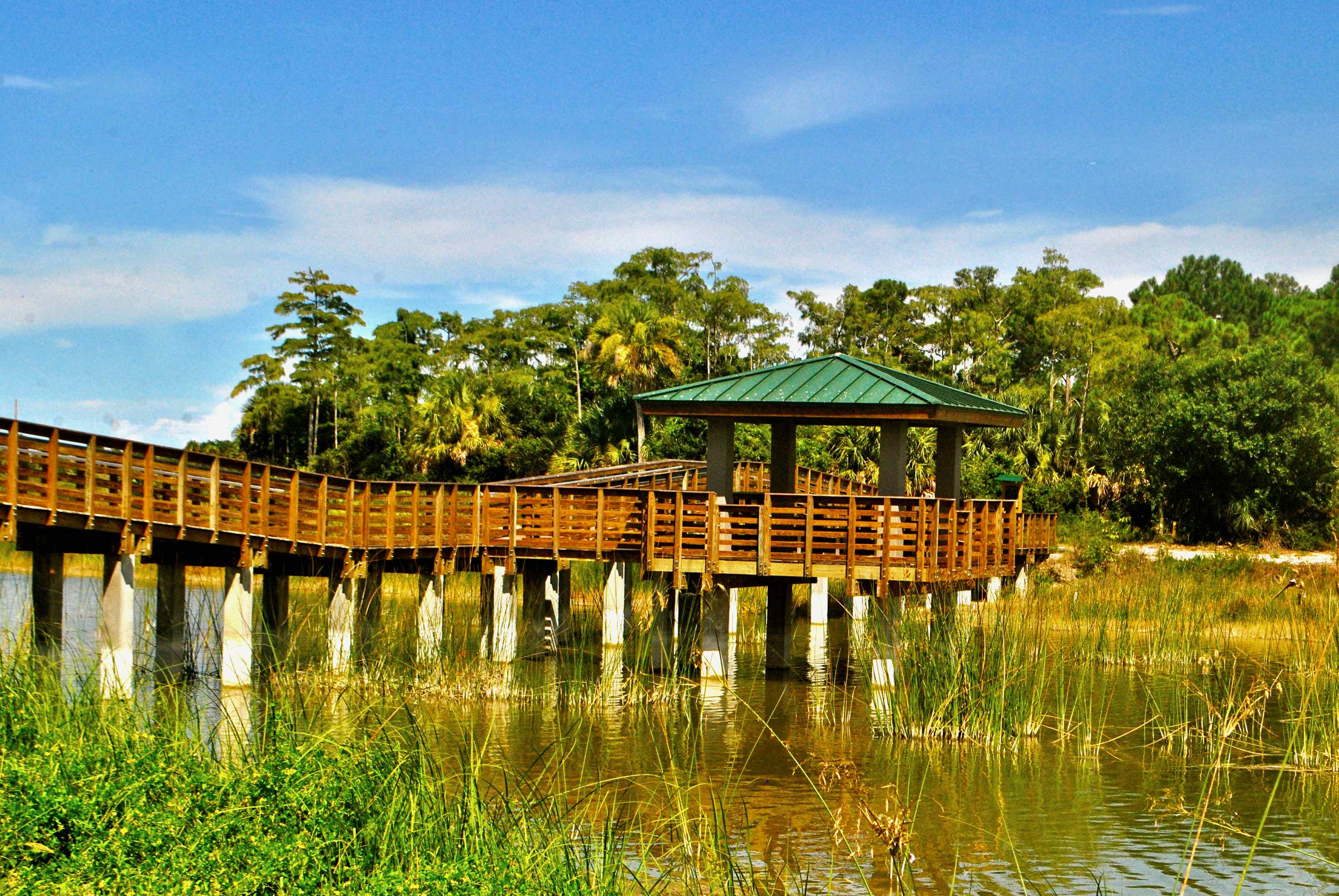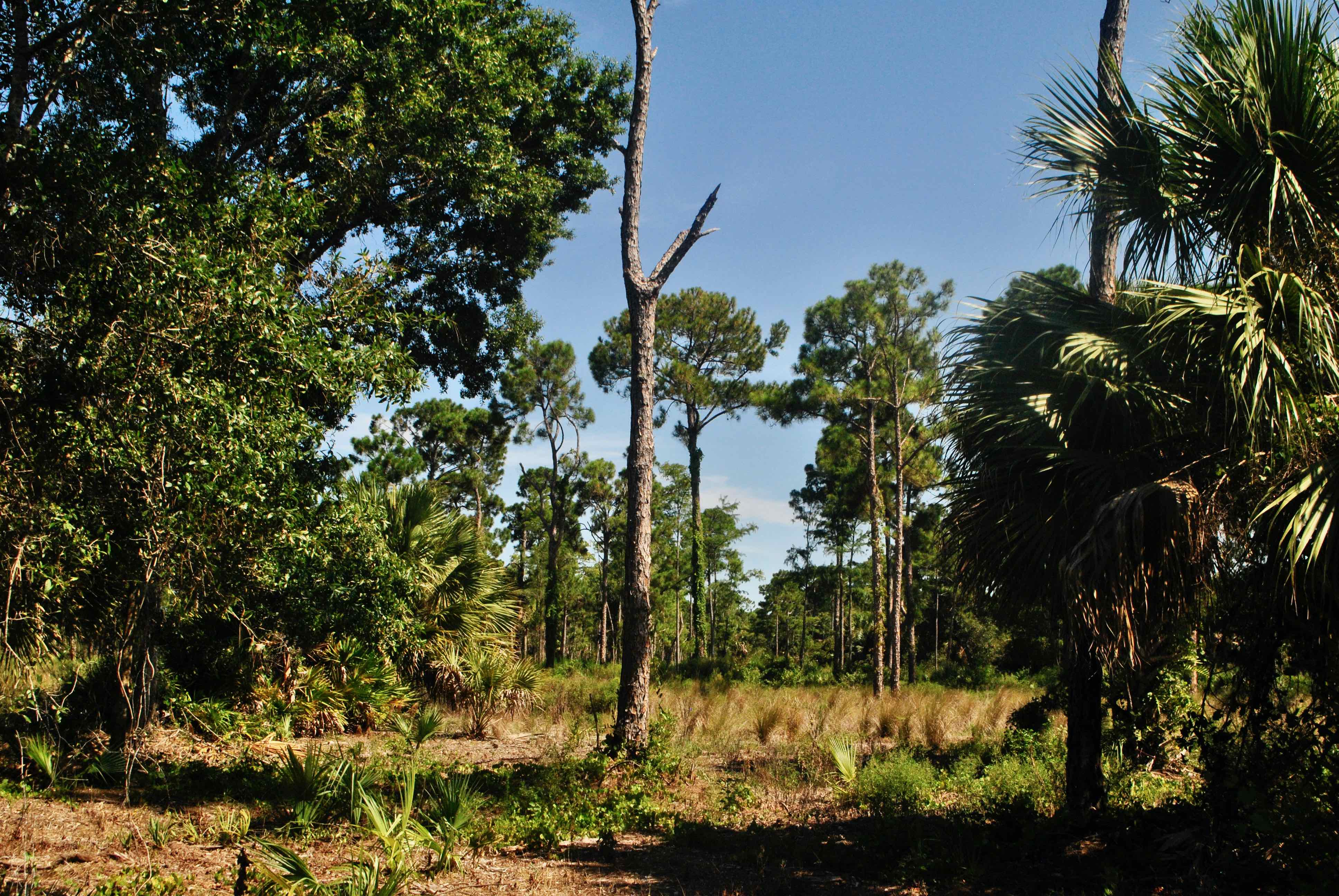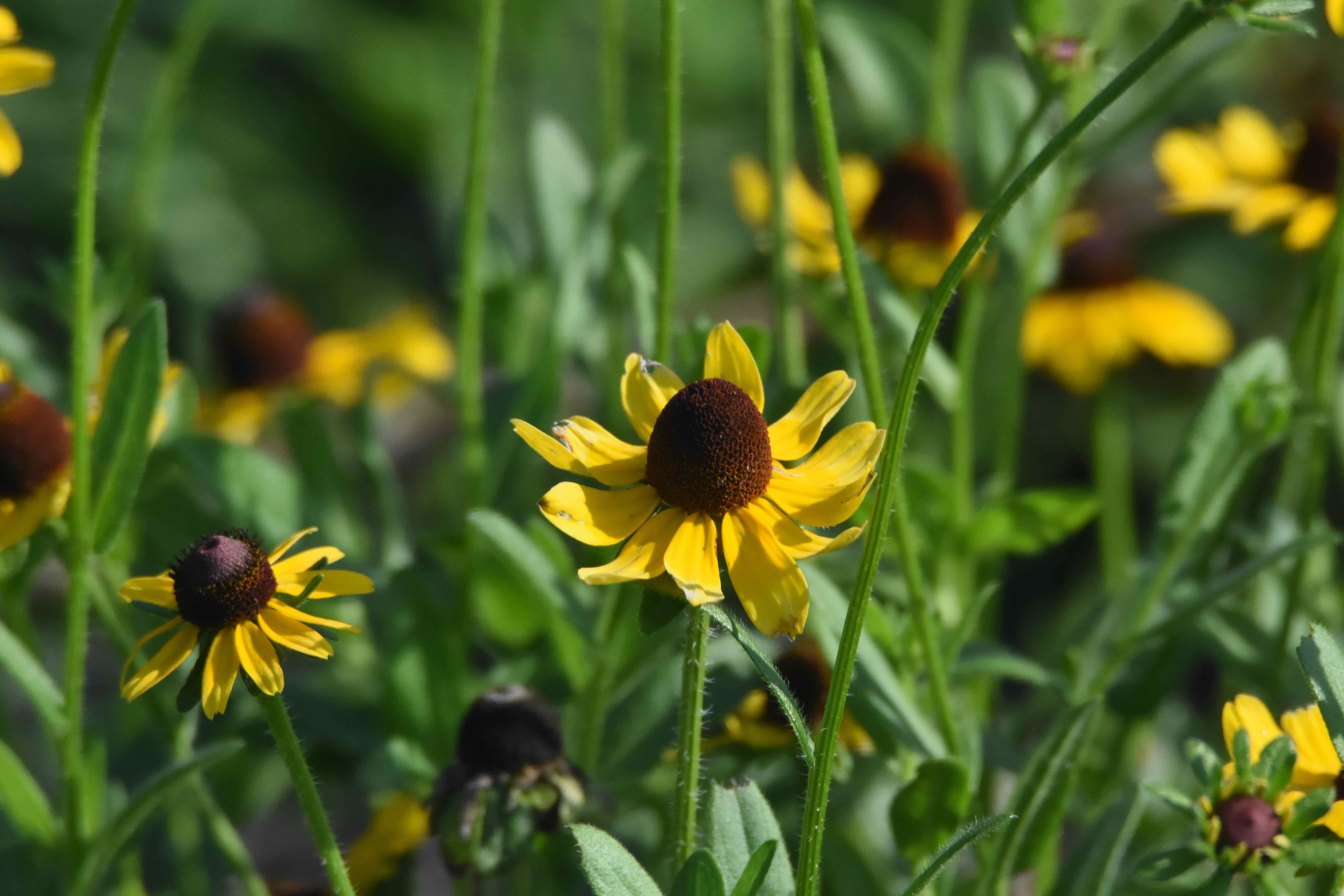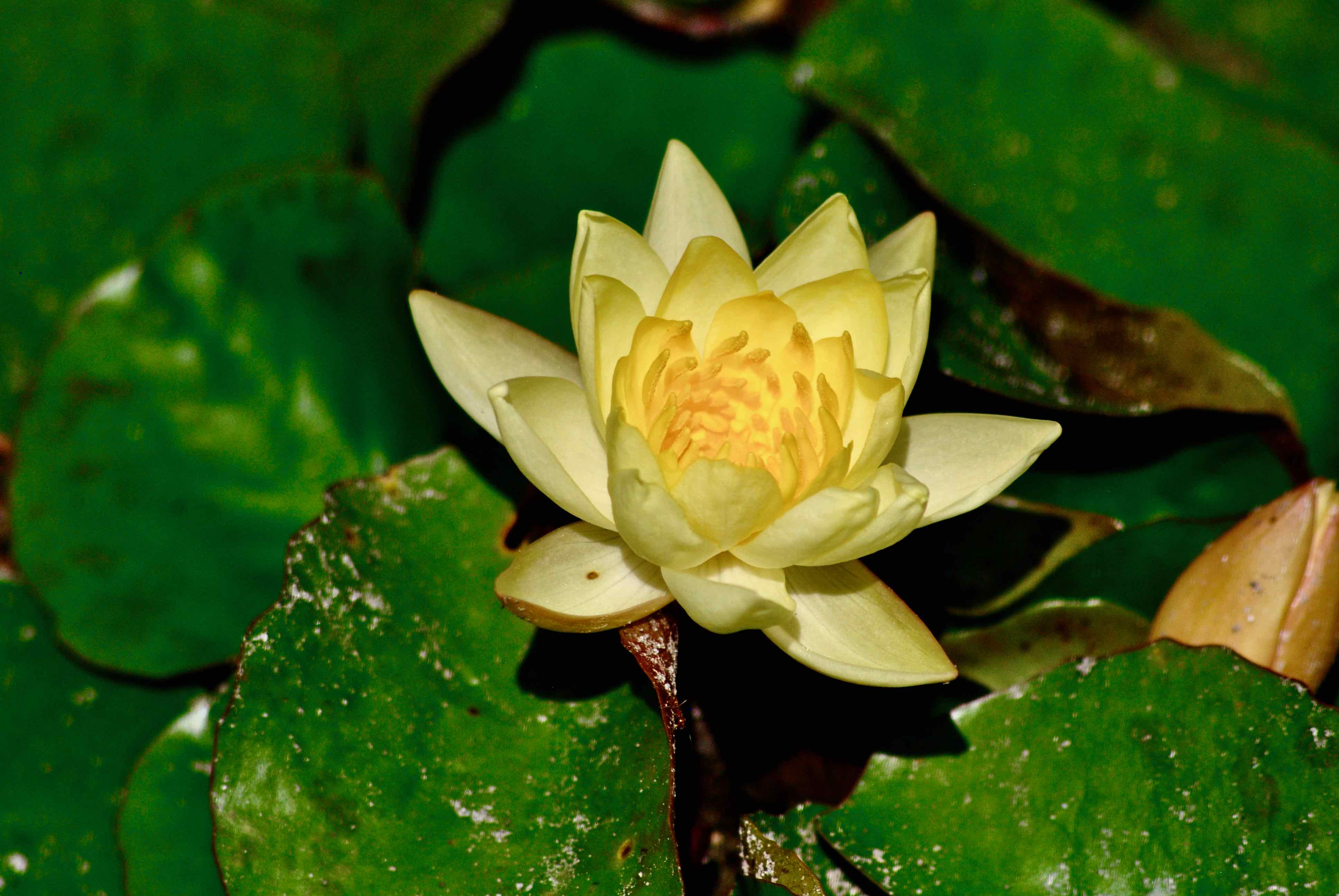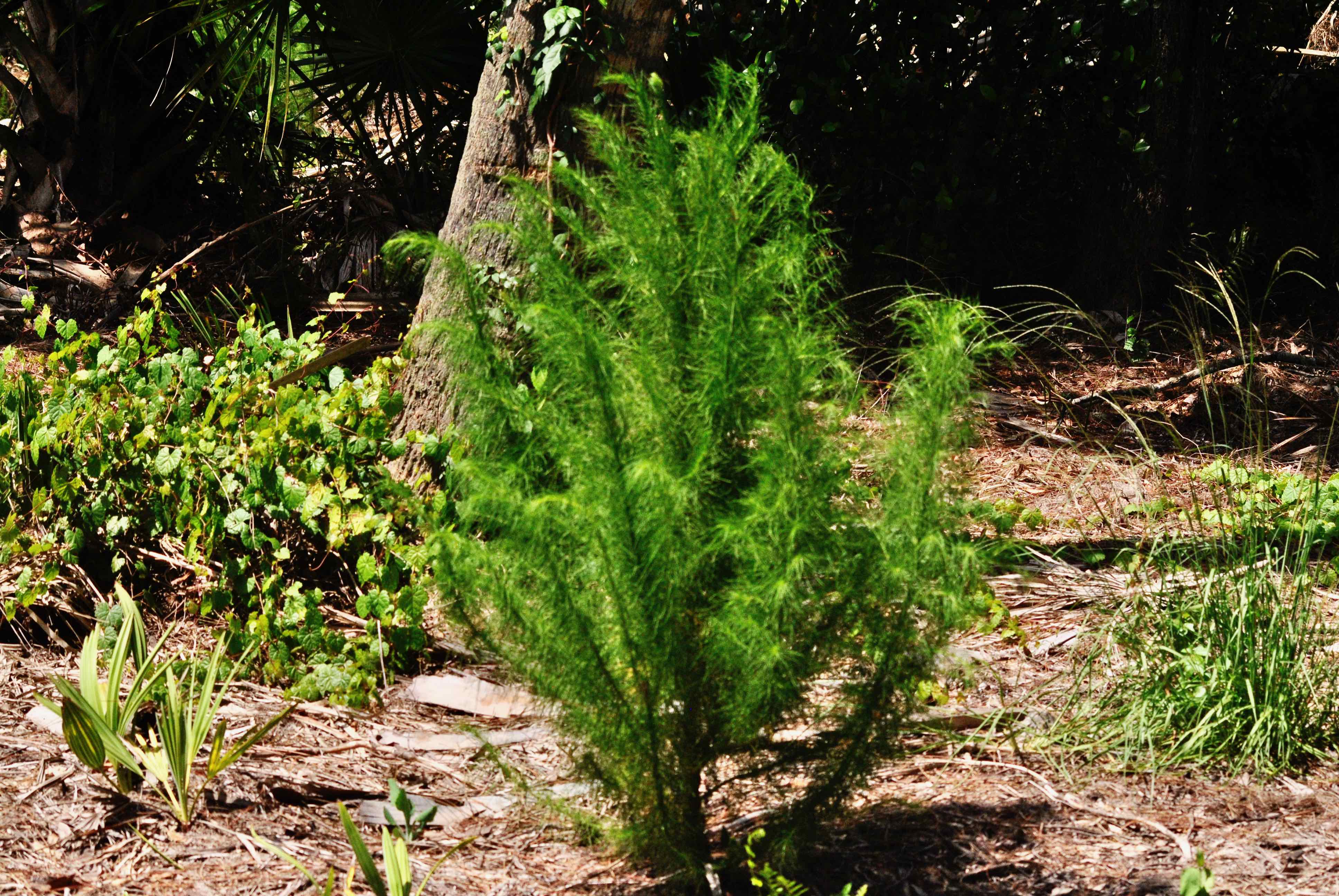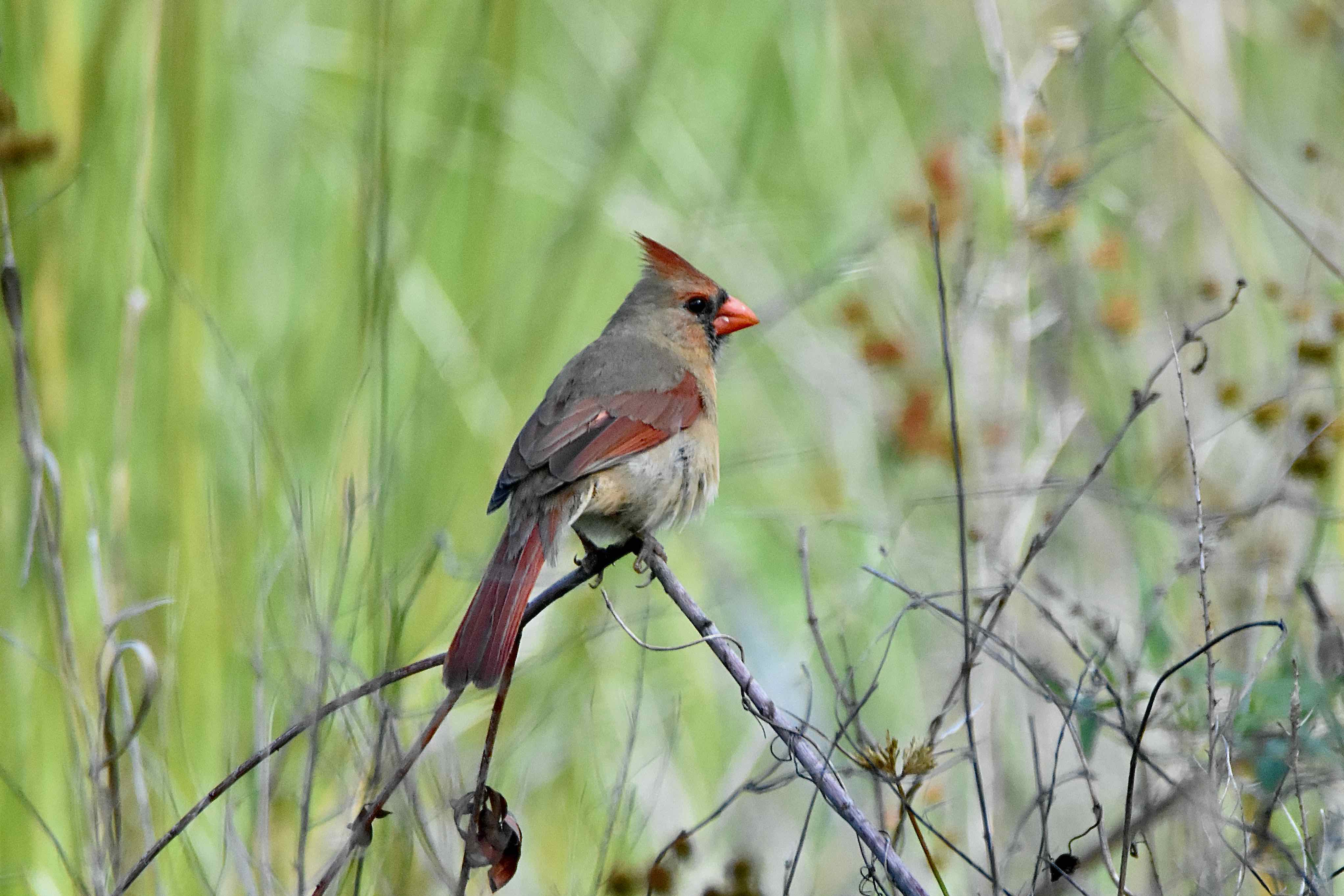Overview: One might say Winding Waters Natural Area is for the birds. Shore birds and wading birds in particular. The major feature of Winding Waters is nearly 132 acres of natural and man-made wetlands, plus 22 acres of open water that meander through the preserve's 562 acres. A good portion of the wetlands were manmade with the intention of creating habitat for our avian friends who prefer things on the wet side. But Winding Waters is very people-friendly, too, with nearly six miles of hiking trails, a canoe/kayak trail and an impressive bridge that crosses the wetlands at its narrowest point. And there is more here to see and experience than just birds.
History: Palm Beach County bought 550 acres that would be developed into Winding Waters Natural Area in December 2001. The land would have become a housing development, but the land owner realized that a nearby landfill limited the potential of the property and sold it to the county at a discount. After restoration of the site, construction of the wetlands and construction of amenities, Winding Waters opened in March 2015. In the decades prior, the land mainly was used to graze cattle. A network of drainage ditches and canals dug over the years lowered water levels on the site, causing the loss of natural wetlands. Nearby public water wells also lowered water levels.
What You'll See: The most notable features of Winding Waters Natural Area are the wetlands, 53.1 acres of man-made basin marsh, 78.5 acres of depression marsh and 22 acres of open water, all interconnected and winding (of course) through the site. The largest single component of the preserve, however, are the 147.3 acres of mesic flatwoods. There are also 83.5 acres of disturbed wet prairie, plus dome and strand swamps.
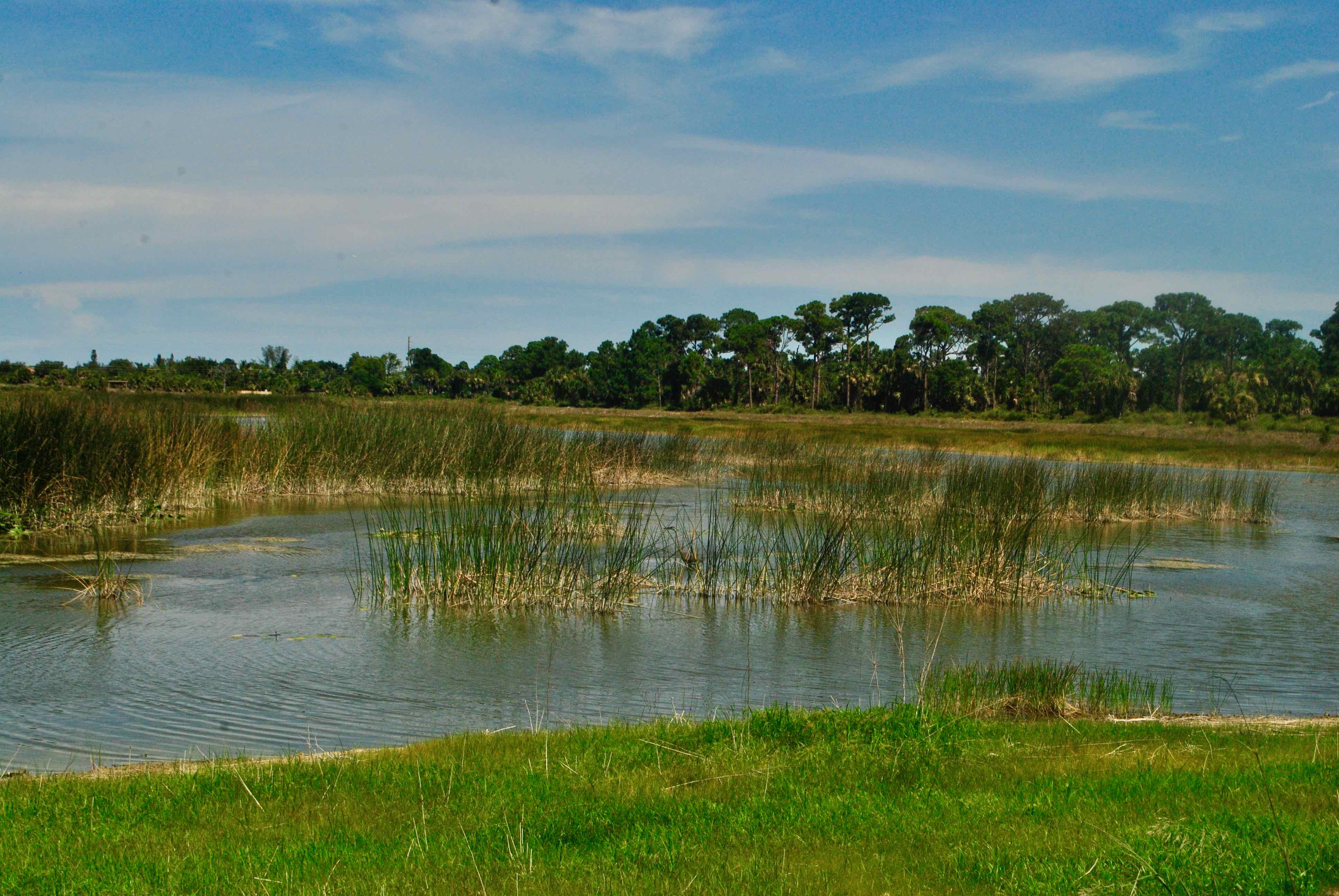
Birds rule at Winding Waters Natural Area, particularly birds associated with water: shore birds, wading birds, raptors and song birds. Tricolored herons, great blue herons, green herons, great egrets and roseate spoonbills patrol the shallows. Ospreys and red-shouldered hawks rule the air above. Cardinals, doves, mockingbirds and blue jays fill the woodlands. There is an abundance of wildflowers along the shores and among the pines and hardwoods. Four-petal St. John's Wort, American beautyberry, Walter's groundcherry, pineland heliotrope and American bluehearts can be found here.
Amenities: There are three hiking trails totaling nearly 5.5 miles, including a half-mile ADA accessible nature trail, a 3.3-mile canoe/kayak trail, covered platforms, a large parking lot and an informational kiosk. There is no drinking water or restrooms, but both are available next door at Dyer Park.
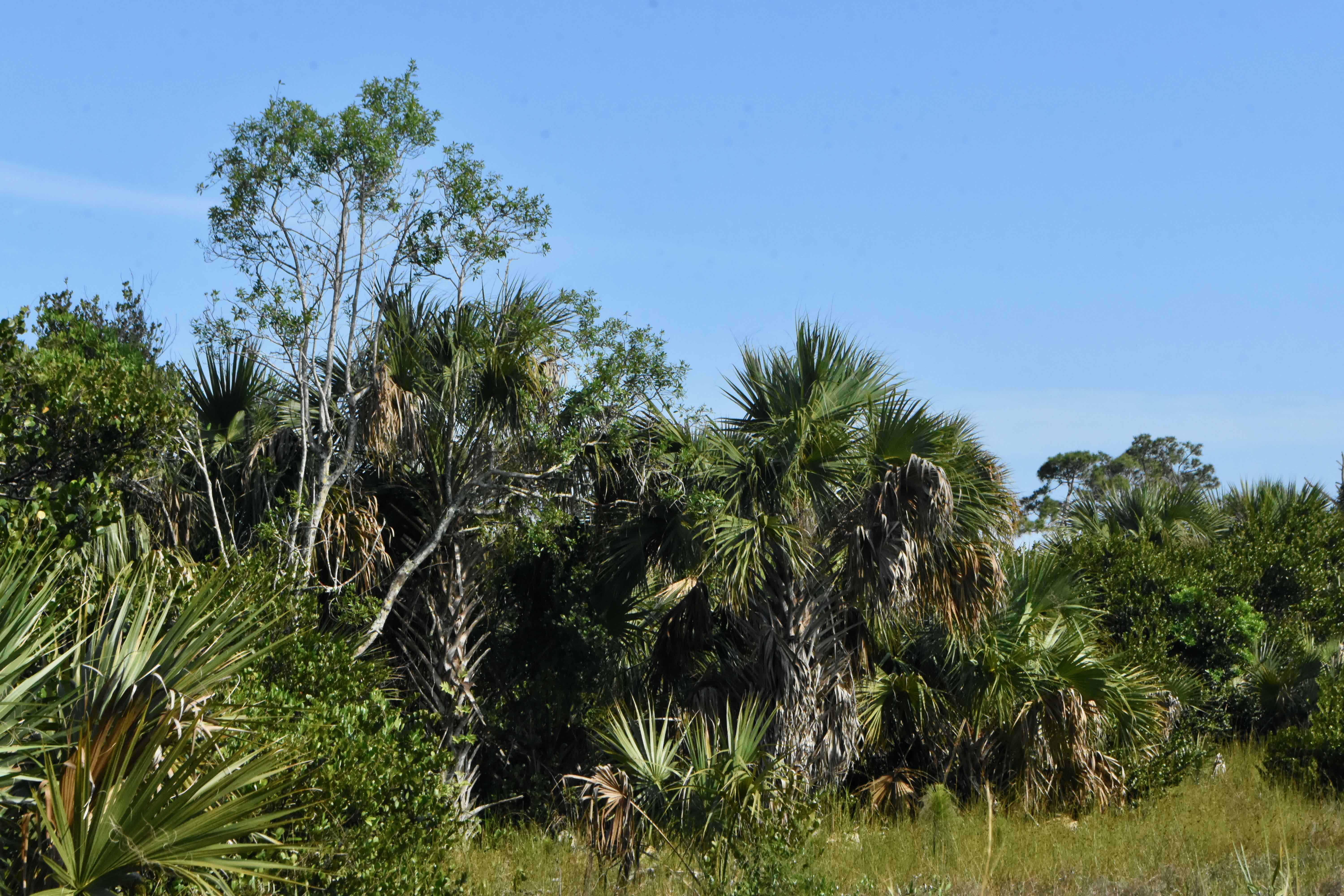
Nearby: West Palm Beach's Grassy Waters Preserve sits to the northwest off Northlake Boulevard. The Solid Waste Authority's Greenway Trail System is to the west off 45th Street. The Apoxee Trail is south near Okeechobee Boulevard. Both the Loxahatchee Slough Natural Area and Sweetbay Natural Area are farther out along the Bee Line Highway.
Links: The Institute for Regional Conservation's plant inventory for Winding Waters Natural Area lists only one plant. Here's the page. The Great Florida Birding Trail's take on Winding Waters is here.
Of Note: Winding Waters Natural Area is open every day of the year, sunrise to sunset. Admission is free.
Cover Photo: A tricolored heron foraging through the shallows of Winding Waters Natural Area. In a large sense, Winding Waters was meant to provide habitat for shore birds like the tricolored, which is state-listed as threatened.
History: Palm Beach County bought 550 acres that would be developed into Winding Waters Natural Area in December 2001. The land would have become a housing development, but the land owner realized that a nearby landfill limited the potential of the property and sold it to the county at a discount. After restoration of the site, construction of the wetlands and construction of amenities, Winding Waters opened in March 2015. In the decades prior, the land mainly was used to graze cattle. A network of drainage ditches and canals dug over the years lowered water levels on the site, causing the loss of natural wetlands. Nearby public water wells also lowered water levels.
What You'll See: The most notable features of Winding Waters Natural Area are the wetlands, 53.1 acres of man-made basin marsh, 78.5 acres of depression marsh and 22 acres of open water, all interconnected and winding (of course) through the site. The largest single component of the preserve, however, are the 147.3 acres of mesic flatwoods. There are also 83.5 acres of disturbed wet prairie, plus dome and strand swamps.

Birds rule at Winding Waters Natural Area, particularly birds associated with water: shore birds, wading birds, raptors and song birds. Tricolored herons, great blue herons, green herons, great egrets and roseate spoonbills patrol the shallows. Ospreys and red-shouldered hawks rule the air above. Cardinals, doves, mockingbirds and blue jays fill the woodlands. There is an abundance of wildflowers along the shores and among the pines and hardwoods. Four-petal St. John's Wort, American beautyberry, Walter's groundcherry, pineland heliotrope and American bluehearts can be found here.
Amenities: There are three hiking trails totaling nearly 5.5 miles, including a half-mile ADA accessible nature trail, a 3.3-mile canoe/kayak trail, covered platforms, a large parking lot and an informational kiosk. There is no drinking water or restrooms, but both are available next door at Dyer Park.

Nearby: West Palm Beach's Grassy Waters Preserve sits to the northwest off Northlake Boulevard. The Solid Waste Authority's Greenway Trail System is to the west off 45th Street. The Apoxee Trail is south near Okeechobee Boulevard. Both the Loxahatchee Slough Natural Area and Sweetbay Natural Area are farther out along the Bee Line Highway.
Links: The Institute for Regional Conservation's plant inventory for Winding Waters Natural Area lists only one plant. Here's the page. The Great Florida Birding Trail's take on Winding Waters is here.
Of Note: Winding Waters Natural Area is open every day of the year, sunrise to sunset. Admission is free.
Cover Photo: A tricolored heron foraging through the shallows of Winding Waters Natural Area. In a large sense, Winding Waters was meant to provide habitat for shore birds like the tricolored, which is state-listed as threatened.


